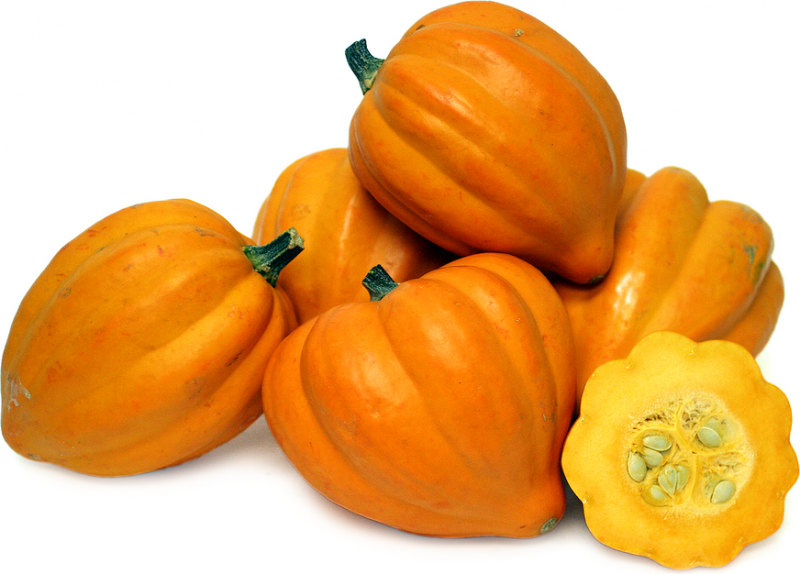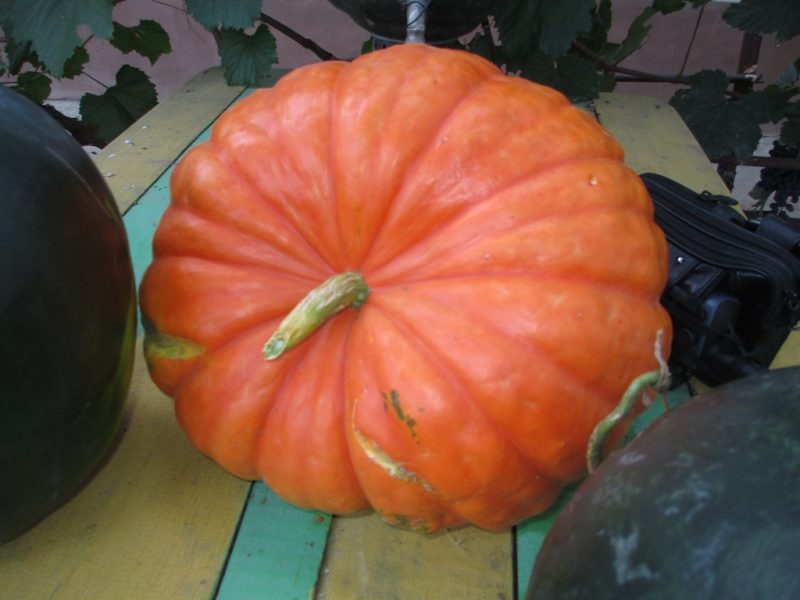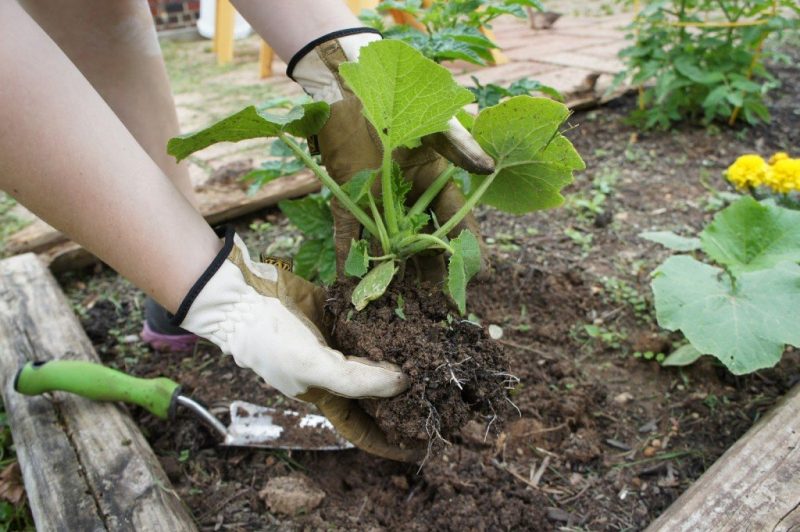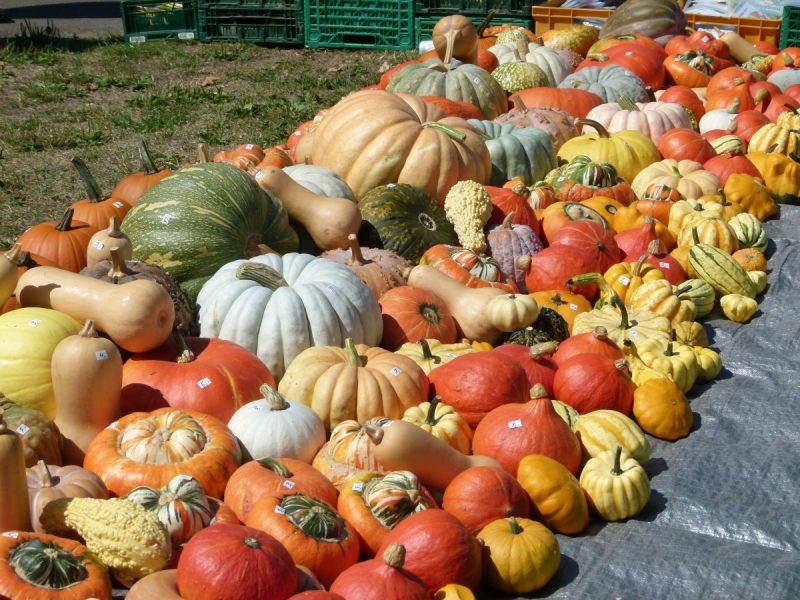The cultivation of large-fruited plants may seem burdensome. However, most gardeners are sure that pumpkin, planting and care in the open ground for this gourd crop do not bring so many worries. Orange pulp and seeds are medicines. Pumpkin is included in the diet for replenishment of vitamins, fiber, macro- and microelements.
Material Content:
Features of growing pumpkins in different regions of Russia
This garden culture prefers space, spreads the whips a few meters from the landing site. A powerful root system penetrates deep into the soil by 2-3 meters. The plant is annual. He likes warm fertile soils, so it is preferable to plant it in the southern part of the site. Pumpkin is more popular in the south, where its fruit is called a “tavern”. In the southern regions, seeds are planted in open ground in April or May. Harvested late: after all vegetables, legumes, corn, stored in the cellar from several months to a year. For the formation of the fetus you need 40-50 days, but you can rip the unripe fruit, it is able to ripen during storage.

After creating sustainable compact varieties, it became possible to successfully grow gourds, even in Siberia. The most dangerous natural factor for pumpkins is spring frosts, prolonged cooling and long rains. Therefore, in the northern and northeastern regions, it is better to use the seedling method.
Varieties of pumpkins for open ground
The botanical genus Pumpkin has almost three dozen species and varieties.Five of them are cultivated, three are more common than others: hard-bark, large-fruited and nutmeg. Decorative pumpkins are becoming increasingly popular among gardeners and landscape designers.
Varieties of ordinary pumpkin (hardcore, kitchen)
The advantages of this species are relative early maturity, good taste of the fruit, and long-term preservation (keeping quality). The orange-yellow color of the pulp predominates. The color of the peel of the fruit varies: green, orange, light yellow, two-tone.

The names of some varieties of hard-boiled pumpkin:
- Harlequin.
- Smile.
- Acorn.
- Aport.
Varieties of large-fruited or giant pumpkin
The species got its name thanks to the fruits, sometimes reaching gigantic sizes (100 kg). The peel is thinner than ordinary pumpkin, the flesh is loose, yellow. The shape of the fruit in most species is flattened, there are longitudinal stripes. The skin color varies greatly from almost white to orange-red and green.

Name of popular varieties:
- Paris red.
- Common.
- Kherson.
- Polevichka.
- Altair.
- Baby
- Titanium.
Varieties of nutmeg pumpkin
Fruits of this species are loved for excellent taste, dietary and medicinal properties, the original form. However, nutmeg differs from other cultivated pumpkins in its thermophilic nature, therefore it is considered more difficult to grow.

Variety Names:
- Butternut.
- Epic.
- Gilea.
- Wonderful.
The Butternat variety is famous for its delicate and fragrant pulp, relatively low in fiber. Fruits are pear-shaped, muted yellow-orange. The better known name of the plant is “Muscat pumpkin”.
Outdoor landing
The optimal time for sowing seeds in those spring days, when the average daily temperature of the soil is 10–13 ° С.
Seeds or seedlings?
The problem does not seem far-fetched to those involved in the cultivation of vegetables in risky farming zones. When determining the timing of planting in open ground and the time of harvesting it is very important to take into account local climatic features. It should focus on the dates of late spring and early autumn frosts. With a long growing season, plants may not “fit” in the time allotted by nature (90-120 days in most varieties).

When and how to plant?
In the suburbs and to the north, seeds are brought into the soil no later than May. If in the region at this time freezing and cooling are possible, then it is better to use the seedling method. Beyond the Urals, seedlings are planted in open ground in the second half of May and June.
Preparation and sowing of seeds in open ground:
- Pre-soaked in a dark pink solution of potassium permanganate.
- Spread the seeds on wet gauze.
- When landing, make a wide hole.
- Pour to the bottom 1-2 l of warm water.
- Wait until absorbed.
- Sprouted seeds are laid out on the surface of the soil.
- Fall asleep on top of 2 cm of the nutrient substrate.
- They press the seeds to the soil, add the remaining humus with peat.
Seedling cultivation is practiced in regions with late spring and short summer. Sow seeds in fairly spacious plastic or paper cups a month before the intended planting in open ground. Placed in a greenhouse or greenhouse. Or placed on a pallet and mounted on a windowsill. Windows should face south and southeast.
Seedlings with three real leaves are planted in the ground. Glasses cut and completely take out roots with an earthen lump. Wells before planting abundantly watered. In case of a threat of frost, seedlings are covered with a film.
Ground requirement, location selection
Pumpkin prefers fresh, fertile soil, but can take root even in compost heaps. If heavy loams predominate on the site, then sand and peat beds will need to be added in the preparation of beds. Podzolic soil is mixed with humus.

Planted pumpkin in an open sunny area, try to place away from other plants. In terms of crop rotation, it takes place after such predecessors as cabbage, tomatoes, potatoes, beets and onions. Compacted plantings with corn are possible, but this is rather a necessary measure.
A week or two before sowing, humus and ash are added to the site. A distance of 60–100 cm is left between the holes, since the stems of the pumpkin grow very much. Powerful lashes for laying large fruits need a lot of moisture and nutrients.
Pumpkin Care
Good growth requires water, protection against pathogens and nutrients. The correct formation of the stem is considered important. Upon reaching 1.2-1.4 m, pinch it and leave two side shoots, 60-70 cm long. The remaining shoots are removed.
Watering and feeding
Pumpkin is watered during the period of budding, flowering and the formation of ovaries. Watering during fruit loading is especially important. During this period, 20-30 liters per plant are abundantly watered once a week. Water can not be sent directly to the stem, sprayed from above. Make a groove around the bush and gradually fill it with water.

Bushes are fed twice during the entire growing season. At the time of formation of the lashes, a solution of complete mineral fertilizer is introduced (15 g of nitrophosphate per 10 l of water). Or replace it with a solution of mullein 1: 8 and ash. This substance will need to make 1 cup per bush. The second time they are fed with the appearance of the ovaries.
Thinning seedlings and loosening
When sowing, several seeds fall into the wells. It is possible that they will all sprout. Leave the strongest and most healthy of them.
At first, more thorough care for the pumpkin is needed: weeding, loosening. Weeds weed when the pumpkin has not yet formed long lashes. Loosen the soil after each watering. After the growth of leaves, weeds do not remain under them, almost no crust forms.
Pumpkin lash formation
You can not pinch the shoots from bush varieties, others will need formation. Pinch the top of the main stem and remove the side shoots. Or leave the main whip, and one side. To ensure ripening and high quality of the fruit, 3 fruits are retained, the rest are broken out.
Pumpkin Diseases and Pests
Fungal, bacterial and viral diseases are dangerous for gourds. Anthracnose affects leaves that change color and dry. The fruits rot. It is necessary to remove "suspicious" plants, spray the pumpkin with Bordeaux liquid.
When powdery mildew stains appear, the plants are treated with sulfur preparations. In the case of fusarium wilting, they add fresh soil under the main stem. Powdery mildew is fought by spraying with Bordeaux fluid. Also used for processing biofungicide Phytosporin.
Dangerous pests of gourds - sprout fly and gourd aphids. A sprout fly lays eggs near manure and compost heaps. Gluttonous larvae come out and eat sprouts and shoots. It is necessary to carefully dig the site, to destroy plant debris. Virin-OS bioinsecticide is used for spraying.
Harvesting and storage
Upon reaching technical ripeness, the peel of the fruit acquires a saturated color, becomes hard. Scourges with leaves dry out. In early ripening varieties, these signs can be observed already in August, but nutmeg pumpkin ripens longer. Large-fruited varieties are also late ripening.

Harvest in dry weather before frost. The stalk is left on the fruits. Store in a cool, dry room, in chopped and peeled form - in the freezer. The most downstream are varieties of large-fruited pumpkin. They are stored for a long time, almost without losing vitamins.












